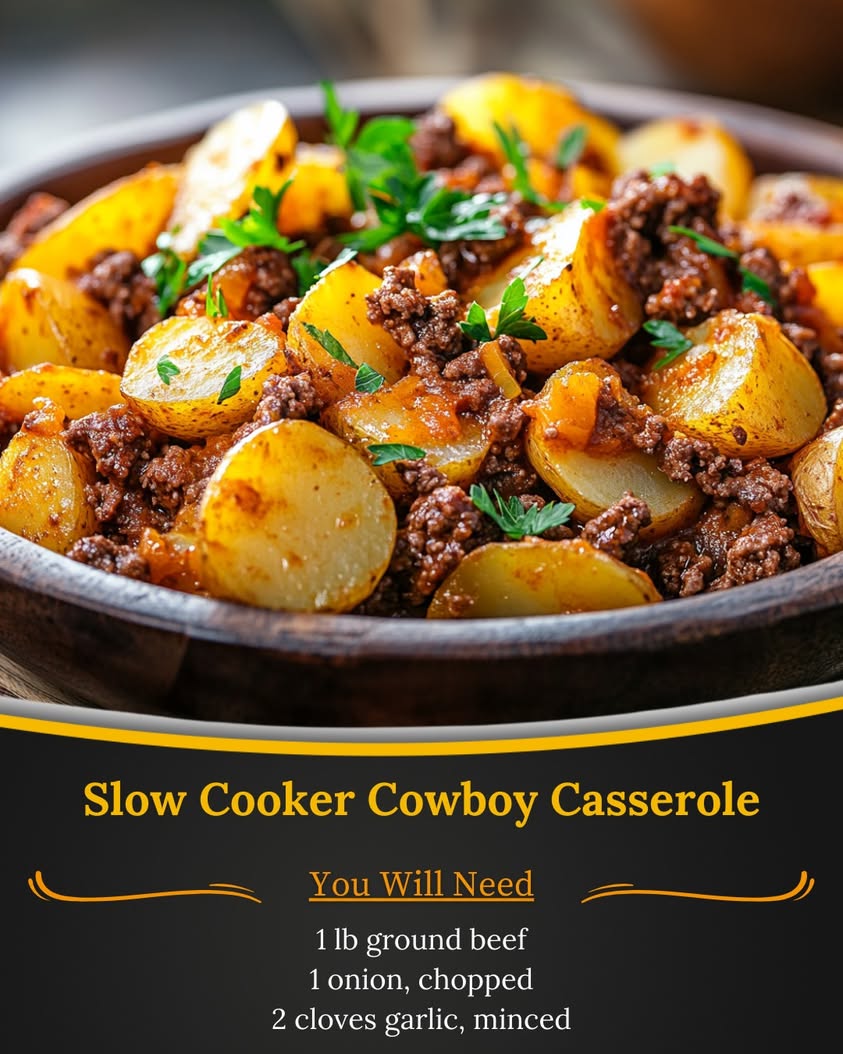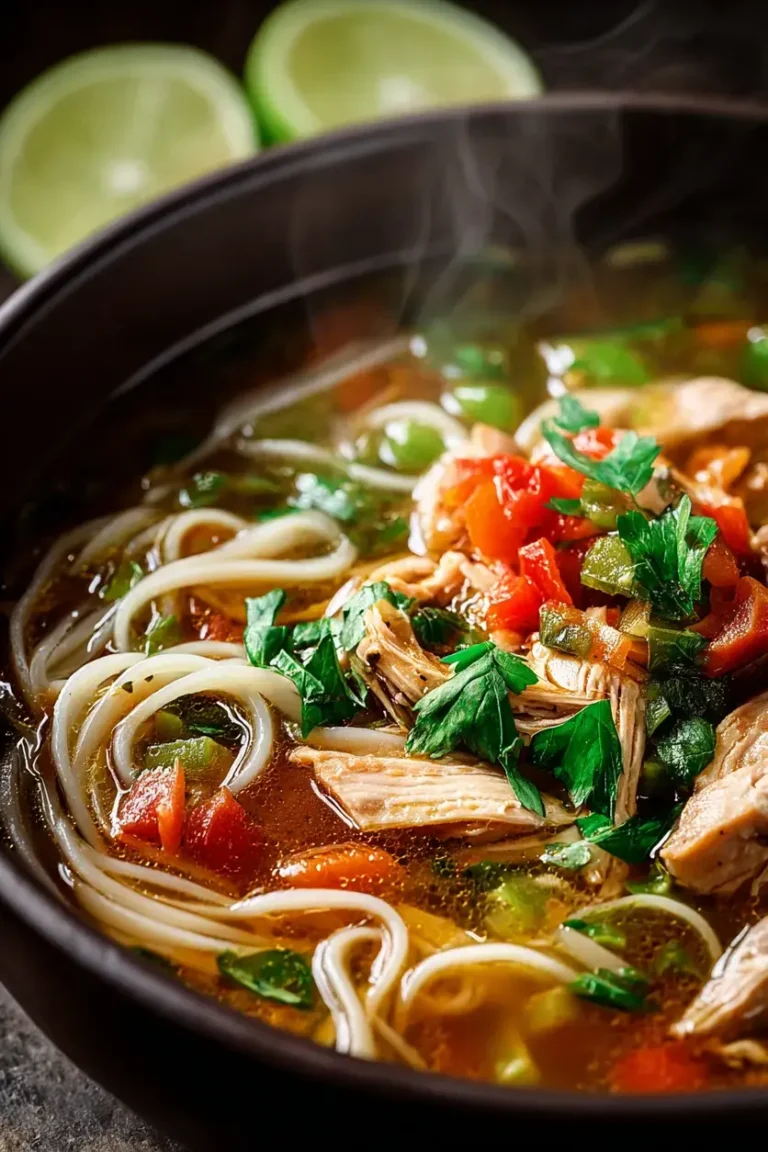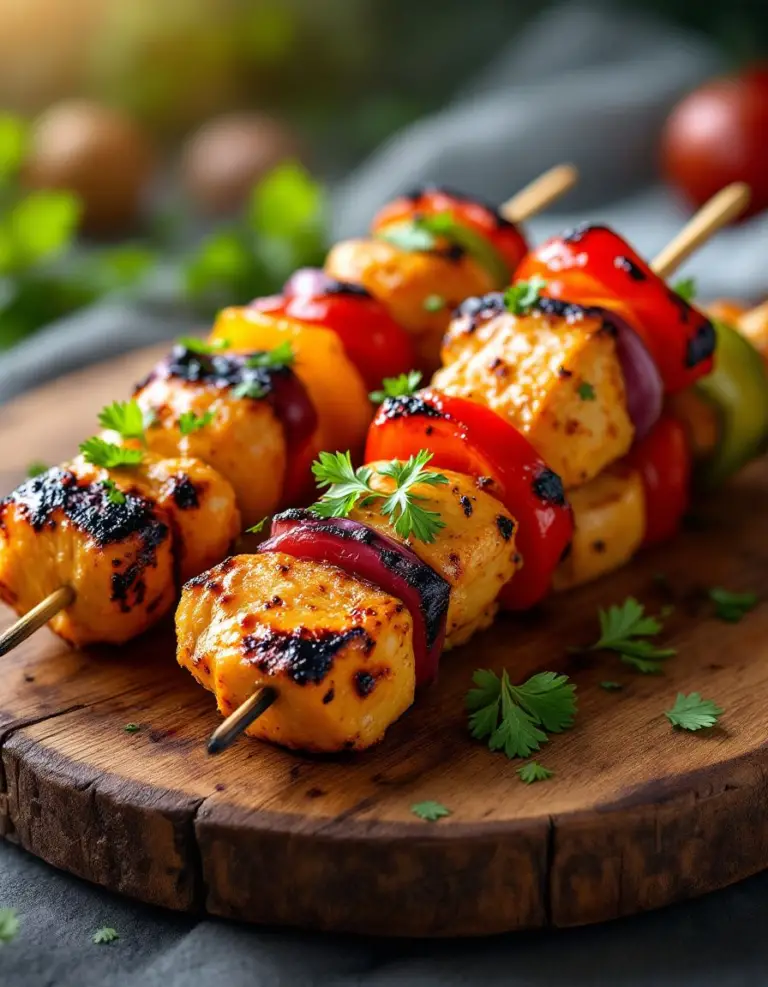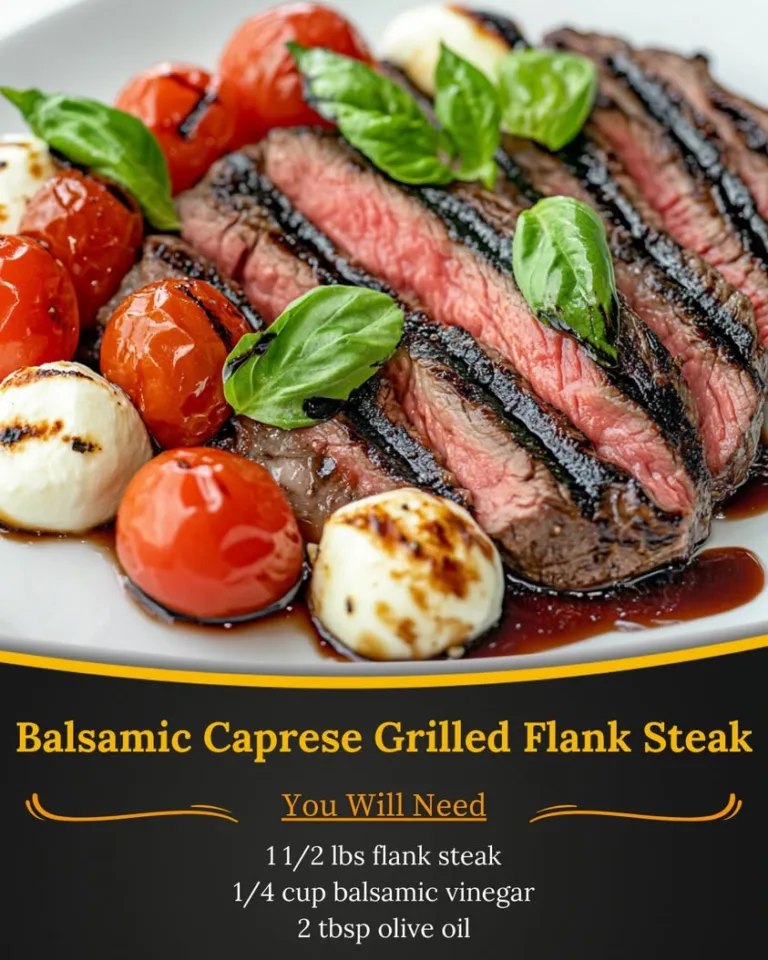Delicious Slow Cooker Casserole Recipe for Effortless Meals

Delicious Slow Cooker Casserole: Easy Comfort Food for Busy Days
There’s something incredibly comforting about a homemade casserole, especially when it’s cooked slowly to perfection in a slow cooker. This Slow Cooker Casserole stands out not only for its simplicity but also for the rich, warming flavors that are essential for cozy family dinners. Layered with fresh vegetables, protein, and carbohydrates, this dish is a wholesome meal that adapts beautifully to your family’s preferences or dietary needs.
The magic of this Slow Cooker Casserole is in the balance of textures and flavors. The tender vegetables meld with savory protein, while the topped cheese creates a delightful, golden crust that makes each bite irresistible. With every serving, you’ll be enchanted by the blend of spices that adds depth and a homemade touch to this dish. It’s not just a meal; it’s a hug in a bowl, nourishing your body and soul after a long day.
Quick Recipe Highlights
- Flavor Profile: This casserole combines savory spices with the earthy sweetness of root vegetables, creating a deliciously comforting dish.
- Texture: Expect a satisfying mix of soft vegetables and tender meat topped with a crispy cheese layer.
- Aroma: The rich aroma of garlic and herbs wafting through your kitchen will beckon everyone to the table.
- Visual Appeal: The vibrant colors of fresh vegetables and the enticing golden brown top make this casserole a feast for the eyes.
- Skill Level Needed: This recipe is perfect for beginners with easy steps, ensuring success with minimal cooking expertise.
- Special Equipment: A slow cooker is essential for this recipe, making it easy to prepare and allowing flavors to meld beautifully over time.
Recipe Overview
- Difficulty Level: This Slow Cooker Casserole is ideal for both novice cooks and seasoned chefs. The straightforward steps make it a no-fail recipe, encouraging even the busiest home cooks to whip up a delicious meal.
- Category: This dish falls under comfort food and is perfect for family meals or potlucks, offering hearty satisfaction on a plate.
- Cuisine: Inspired by classic homestyle cooking, this casserole brings together flavors familiar to many kitchen traditions, making it a comforting staple across various cultures.
- Cost: The ingredients are budget-friendly, making this meal a great choice for families looking for economical yet nutritious dinner options.
- Season: Great for any season, especially fall and winter, when warming dishes are most appreciated.
- Occasion: Ideal for weeknight dinners or when entertaining guests, this versatile casserole fits any occasion.
Why You’ll Love This Recipe
The combination of taste and texture in this Slow Cooker Casserole keeps everyone coming back for more. The harmonious blend of tender vegetables, protein, and creamy cheese creates a delightful mouthfeel that tantalizes the palate. Each bite is filled with comforting flavors that evoke the warmth of home cooking, making it a satisfying option any time of year.
Convenience is a major perk of this recipe. Prepared in the morning and left to cook throughout the day, it frees up your evenings for family time or relaxation. The slow cooking process also allows deeper flavors to develop, enhancing the overall taste of the dish while minimizing your kitchen workload.
From a nutritional perspective, this casserole is loaded with vegetables and protein, making it a balanced meal option. You can easily tailor the ingredients to include seasonal produce or substitute with healthier options, ensuring you serve a wholesome dish that supports your family’s dietary needs.
This recipe is a fantastic choice for hosting and entertaining. A large casserole encourages communal dining, making it easy to serve a crowd. The warm, inviting aroma will have your guests savoring every bite, creating an atmosphere of comfort and relaxation in your home.
Finally, this Slow Cooker Casserole is cost-effective, utilizing basic but substantial ingredients that don’t require extravagant spending. Each serving offers not only nourishment but also the satisfaction of a complete meal at a fraction of the cost of dining out.
Historical Background and Cultural Significance
The origin of casseroles can be traced back to ancient cooking methods, where food was slow-cooked in earthenware pots. Over centuries, this method transformed into the modern casserole we cherish today, especially in American households. Casseroles have become synonymous with comfort, offering a convenient way to feed large families throughout generations.
Casseroles hold significant cultural value, symbolizing gatherings and shared meals. They are often prepared for family celebrations, potluck dinners, and community events, fostering connections through shared culinary experiences. This dish represents more than just food; it embodies the spirit of togetherness.
Over the years, the recipe has evolved, with variations popping up in different regions. Whether it’s a Southwest-style casserole with spicy ingredients or a classic French gourd casserole, this dish adapts seamlessly to diverse tastes, making it universally loved.
Regional variations are plentiful, with each culture adding its unique twist. For instance, in Italy, a layered pasta casserole incorporates rich cheeses and sauces, while in Mexico, tortilla-based casseroles boast bold spices and flavors. This adaptability is part of what makes casseroles an enduring favorite across culinary landscapes.
Ingredient Deep Dive
Vegetables: Vegetables serve as the backbone of any casserole, providing essential nutrients, vibrant colors, and flavors. Common choices include carrots, bell peppers, and zucchini. When choosing vegetables, opt for fresh, seasonal produce when possible. They not only enhance the dish’s visual appeal but also maximize flavor. Store leftover vegetables in the refrigerator and opt for frozen if fresh is unavailable.
Protein: Varieties such as chicken, beef, or beans are popular protein choices that lend heartiness to your casserole. Each protein source comes with its cultural significance, where chicken is favored in comforting meals while ground beef is a staple in American cuisine. Nutritionally, protein is vital for muscle support and overall health. When selecting protein, look for organic or grass-fed options to boost nutrition.
Common Mistakes to Avoid
- Overcrowding the slow cooker can lead to uneven cooking; always follow recommended ingredient amounts.
- Using frozen meats without thawing them can extend cooking time, leading to texture issues.
- Neglecting to season adequately may result in bland flavors; be generous with spices and herbs.
- Failing to layer ingredients properly can prevent flavors from melding—placing denser items at the bottom helps.
- Not allowing the casserole to rest after cooking can prevent flavors from settling and make it difficult to serve.
- Skipping the cheese may lead to a less appealing texture; a cheesy topping adds richness and charm.
- Not adjusting the cooking time for high-altitude cooking results in undercooked ingredients.
- Forgetting to spray or grease the slow cooker can make cleanup a hassle.
- Overcooking can lead to mushy textures, so stick to the advised timing carefully.
- Using poor-quality ingredients will negatively impact taste, so choose fresh and high-quality whenever possible.
Essential Techniques
Layering Ingredients: Proper layering is key to achieving optimal cooking results in casseroles. Starting with the main protein, followed by vegetables, then carbohydrates (like rice or pasta) ensures each component cooks thoroughly. To master this technique, visualize the cooking process and adjust layers for even cooking. Look for visual cues like bubbling edges to indicate successful layering.
Slow Cooking: Understand the importance of slow cooking—this technique helps develop flavors while tenderizing the ingredients. To master it, set the slow cooker on low and allow ample time for ingredients to meld. Common pitfalls include lifting the lid frequently, which introduces cold air. Aim to keep the lid closed for even cooking and follow visual cues of bubbling and aroma.
Pro Tips for Perfect Slow Cooker Casserole
1. Always pre-cook your protein if using raw meats to enhance flavor and prevent greasiness in your casserole.
2. Try mixing different types of cheese for depth; a combination of sharp cheddar and mozzarella works wonders.
3. Use fresh herbs at the end of the cooking time to add brightness; dried herbs can withstand long cooking times better.
4. For added depth, consider a splash of wine or broth as a flavorful base.
5. Experiment with different grains like quinoa or rivela for alternative textures.
6. If you’re short on time, you can use pre-cut veggies or frozen mixes to speed up prep.
7. Serve with a fresh side salad to balance the meal and add a little crunch.
8. Use parchment paper in your slow cooker for easy removal and cleanup.
Variations and Adaptations
Incorporate regional variations by adjusting spices tailored to your cultural influences; a dash of Cajun spice can add a delightful kick to the mix. Seasonal adaptations can also enhance freshness, such as incorporating squashes in the fall or bell peppers in the summer.
Dietary modifications are easy to achieve—substituting proteins or introducing more vegetables can cater to dietary needs without compromising flavor. For example, using lentils or chickpeas instead of meat can create a hearty vegan option.
Flavor variations can be explored by adding different sauces or spice blends to excite your taste buds. Experimenting with various cheese types or including ingredients like bacon can also provide a unique twist.
Texture modifications can enhance the dish, from crispy toppings using breadcrumbs to incorporating nuts for a delightful crunch. Lastly, consider garnishing with fresh herbs or drizzling with high-quality olive oil for aesthetic appeal and added flavor.
Serving and Presentation Guide
For plating, consider using deep, rustic bowls to enhance the comfort food vibe. A sprinkle of fresh herbs over the top can brighten the presentation while adding a burst of fresh flavor. Traditional accompaniments like crusty bread or a side of coleslaw can complement the meal beautifully.
Modern serving suggestions may include individual ramekins for personal portions, which not only look charming but allow guests to serve themselves. Maintain proper food temperatures; serve warm dishes hot and ensure that cold dishes stay chilled.
Wine and Beverage Pairing
For wine pairings, consider a medium-bodied red wine, such as a Merlot or Pinot Noir, which complements the hearty flavors of the casserole. Non-alcoholic alternatives like sparkling water with slices of citrus or an herbal iced tea can also enhance your dining experience.
Temperature considerations are crucial; serving wines slightly chilled enhances the overall flavor. For a warm beverage pairing, a cup of chai tea can contrast nicely with the richness of the casserole.
Storage and Shelf Life
To store your casserole, allow it to cool completely before transferring it to an airtight container. Refrigerate any leftovers to maintain freshness for up to 3 days. When reheating, be mindful to do so thoroughly, reaching an internal temperature of 165°F to ensure food safety.
Freezing is an excellent option for longer storage; wrap tightly in plastic wrap and aluminum foil to protect against freezer burn. Thaw overnight in the refrigerator before reheating, and enjoy the same delicious flavors as the day it was made.
Make Ahead Strategies
Planning ahead can simplify your evening cooking routine. Pre-prepare your ingredients and layer them in the slow cooker the night before, placing them in the fridge. This efficient strategy allows you to start the cooking process effortlessly in the morning.
Maintain quality by ensuring each ingredient is fresh and properly prepared before assembly. When reheating, add a splash of liquid to restore moisture and revitalize flavors. Consider adding fresh herbs or greens at the last minute for brightness and vitality.
Scaling Instructions
To halve the recipe, simply divide each ingredient amount by two while keeping the seasoning ratios balanced. If doubling or tripling, ensure your slow cooker can accommodate the increase in volume. Keep an eye on cooking time, as larger batches may require additional time to heat through adequately.
For special occasions where larger quantities are needed, plan your equipment adjustments accordingly—using multiple slow cookers can be an effective solution. Maintain a similar cooking temperature to retain flavor profiles during scaling.
Nutritional Deep Dive
This Slow Cooker Casserole is nutritionally balanced, offering a hearty dose of proteins, carbohydrates, and a range of vitamins and minerals from the vegetables. A macro breakdown usually reveals a well-rounded profile of proteins for muscle support, healthy fats for energy, and carbohydrates for sustained energy levels.
Micronutrient analysis indicates significant contributions from fresh vegetables, enhancing overall health benefits. Portion analysis is vital for maintaining caloric control, so consider measuring servings based on dietary needs or goals, aiding in weight management and promoting a healthier lifestyle.
Dietary Adaptations
For gluten-free options, swap traditional pasta or grains with gluten-free counterparts; quinoa or rice are great alternatives without compromising taste. A dairy-free version can be achieved by using vegan cheese or omitting cheese altogether, ensuring flavorful results.
For those following a vegan diet, use plant-based proteins such as lentils or tofu, ensuring the dish is both nutritious and satisfying. Low-carb dieters can reduce their carbohydrate intake by increasing non-starchy vegetables and cutting out grains. These adaptations allow everyone to enjoy this comforting casserole regardless of dietary preferences.
Troubleshooting Guide
When addressing texture issues, undercooked vegetables may require prolonged cooking time or switching to smaller cuts for more even cooking. For flavor balance, adjusting seasoning levels with extra spices or a splash of vinegar can enhance overall taste.
Temperature problems often arise if the slow cooker is not set on the correct heat level; always check settings before cooking. If substituting ingredients, be sure to adjust their cooking times accordingly to avoid mishaps, and regularly monitor cooking progress.
Recipe Success Stories
Community feedback celebrates the versatility of this Slow Cooker Casserole, with many readers expressing joy in creating their own variations. Feedback highlights individual adaptations that cater to specific dietary needs while maintaining beloved family traditions.
Notable successes include readers who shared their unique ingredient choices, such as spicy sausage or roasted bell peppers, which have spiced up the traditional recipe. These shared experiences foster a sense of community and innovation, inspiring others to tweak their recipes creatively.
Frequently Asked Questions
Can I make this casserole ahead of time? Yes! Prepare the casserole components the night before and keep them refrigerated until ready to cook the next day.
What if I don’t have a slow cooker? You can bake the casserole in the oven at a low temperature (around 325°F) for a similar effect.
How long will leftovers last? Leftovers can be stored in the refrigerator for up to 3 days, or frozen for longer storage.
Can I add more vegetables? Absolutely! Feel free to customize this recipe by including your favorite seasonal vegetables.
Is it possible to make it vegan? Yes, simply use plant-based proteins and vegan cheese to adapt the recipe.
Can I use frozen vegetables? Frozen vegetables are fine, though they may require additional cooking time to ensure everything is heated through.
How do I know when it’s done? The casserole is done when the vegetables are tender and the protein is cooked through; check with a meat thermometer if using meat.
Are there any spice recommendations? Feel free to use your favorite herbs and spices, such as Italian seasoning, garlic powder, or paprika.
Can I substitute quinoa for rice? Yes! Quinoa works wonderfully and adds an extra nutty flavor to the dish.
What’s the best way to reheat leftovers? Reheat in the oven covered with foil at 350°F until heated through, or use the microwave in short intervals.
Additional Resources
For more delicious recipes, check out our collection of vegan casseroles and gluten-free meal ideas. Enhance your cooking skills by exploring our technique guides, such as how to effectively use a slow cooker. We also share ingredient information to help you maximize your kitchen potential, ensuring every meal is both nutritious and flavorful.
Join the Conversation
Engage with us on social media by sharing photos of your casserole creations! We love to see adaptations and hear your recipe reviews. Our community thrives on shared experiences and innovation in the kitchen, so don’t hesitate to suggest your variations and improvements to our recipes.
The Recipe
Slow Cooker Casserole
Serves: 6 servings
Prep Time: 15 mins
Cook Time: 6 hours
Total Time: 6 hours 15 mins
Kitchen Equipment Needed
- Slow Cooker
- Cutting Board
- Sharp Knife
- Measuring Cups and Spoons
- Large Mixing Spoon
- Oven mitts
Ingredients
- 2 cups chopped vegetables (carrots, bell peppers, zucchini)
- 1 pound ground beef or turkey
- 1 cup cooked rice or quinoa
- 1 can diced tomatoes (14.5 oz)
- 1 cup shredded cheese (cheddar or your choice)
- 1 teaspoon garlic powder
- 1 teaspoon Italian seasoning
- Salt and pepper to taste
Directions
- Layer the chopped vegetables at the bottom of the slow cooker.
- Add the ground meat on top of the vegetables, breaking it up as necessary.
- Mix in the cooked rice or quinoa, followed by the can of diced tomatoes.
- Sprinkle the seasonings, salt, and pepper over the mixture.
- Cook on low for about 6 hours until veggies are tender and the meat is cooked through.
- In the last 15 minutes, sprinkle cheese over the top, cover, and let it melt.
- Garnish with fresh herbs if desired and serve warm.
Recipe Notes
- Feel free to adjust cooking times based on your slow cooker model.
- For a vegetarian version, substitute meat with an additional cup of beans or lentils.
- This dish can also be made ahead of time and reheated for convenient meals.






